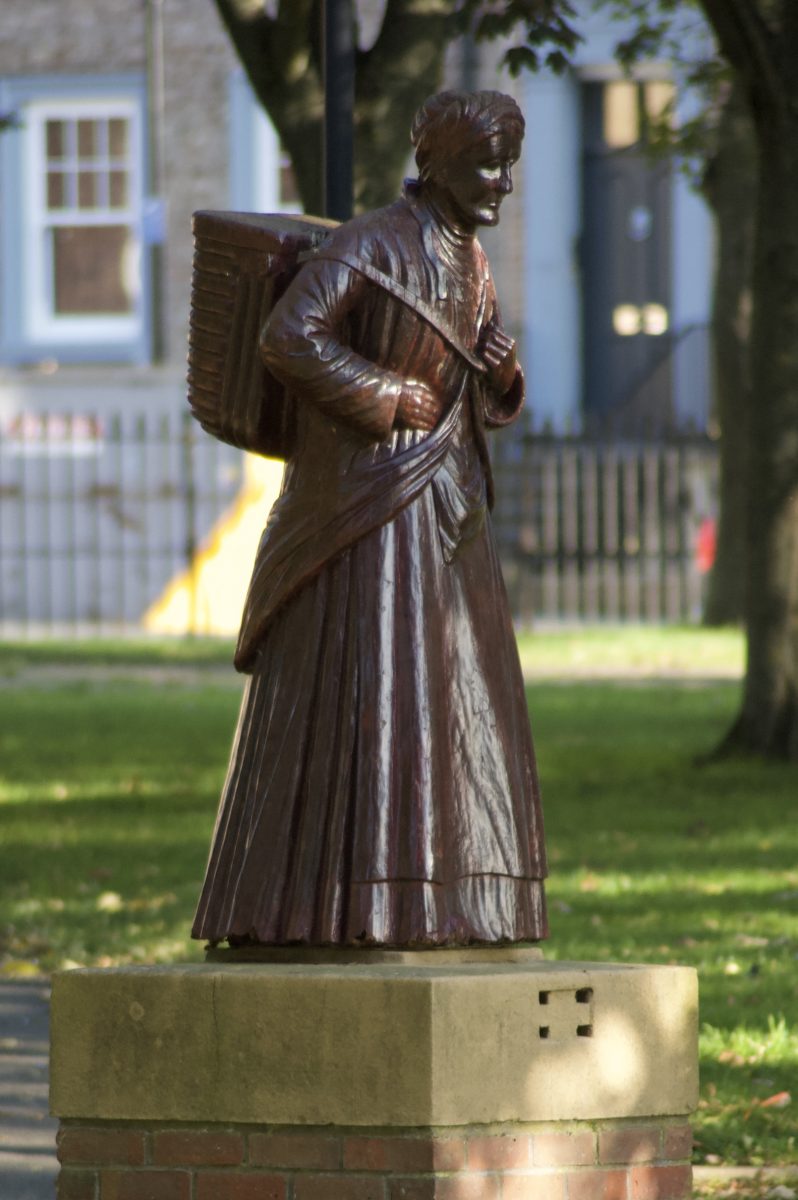The old Wooden Dolly in Northumberland Square, North Shields. This dolly was created by the studio of Robert (Mouseman) Thompson.
Robert (Mouseman) Thompson (7 May 1876 – 8 December 1955) was a British furniture maker. He was born and lived in Kilburn, North Yorkshire, England, where he set up a business manufacturing oak furniture, which featured a carved mouse on almost every piece.
It is claimed that the mouse motif came about accidentally in 1919 following a conversation about “being as poor as a church mouse”, which took place between Thompson and one of his colleagues during the carving of a cornice for a screen. This chance remark led to him carving a mouse and this remained part of his work from this point onwards.
Thompson was part of the 1920s revival of craftsmanship, inspired by the Arts and Crafts movement led by William Morris, John Ruskin and Thomas Carlyle. More specific to furniture making in this genre and era include Stanley Webb Davies of Windermere.
The workshop, now being run by his descendants, includes a showroom and visitors’ centre, and is located beside the Parish Church, which contains “Mouseman” pews, fittings and other furniture. The company is now known as “Robert Thompson’s Craftsmen Ltd – The Mouseman of Kilburn.”
Fr Paul Nevill, a former Headmaster of Ampleforth College, asked Thompson to make the Ampleforth Abbey’s furniture; they liked it so much that Ampleforth kept asking Thompson for more works, including the library and most of the main building. Fr Gabriel Everitt, current Headmaster, has recently asked the Mouseman company for more work. Most of Ampleforth College houses are decorated with Robert Thompson’s furniture.
Others who continue in his style working in Yorkshire oak, have adopted similar identifying marks and nicknames, for example Thomas “Gnomeman” Whittaker (1910–1991), Derek “Lizardman” Slater, Colin “Beaverman” Almack, Wilf “Squirrelman” Hutchinson, Albert “Eagleman” Jeffray, Malcolm “Foxman” Pipes, Shaw & Riley “The Seahorsemen of Hessay”, et al..


